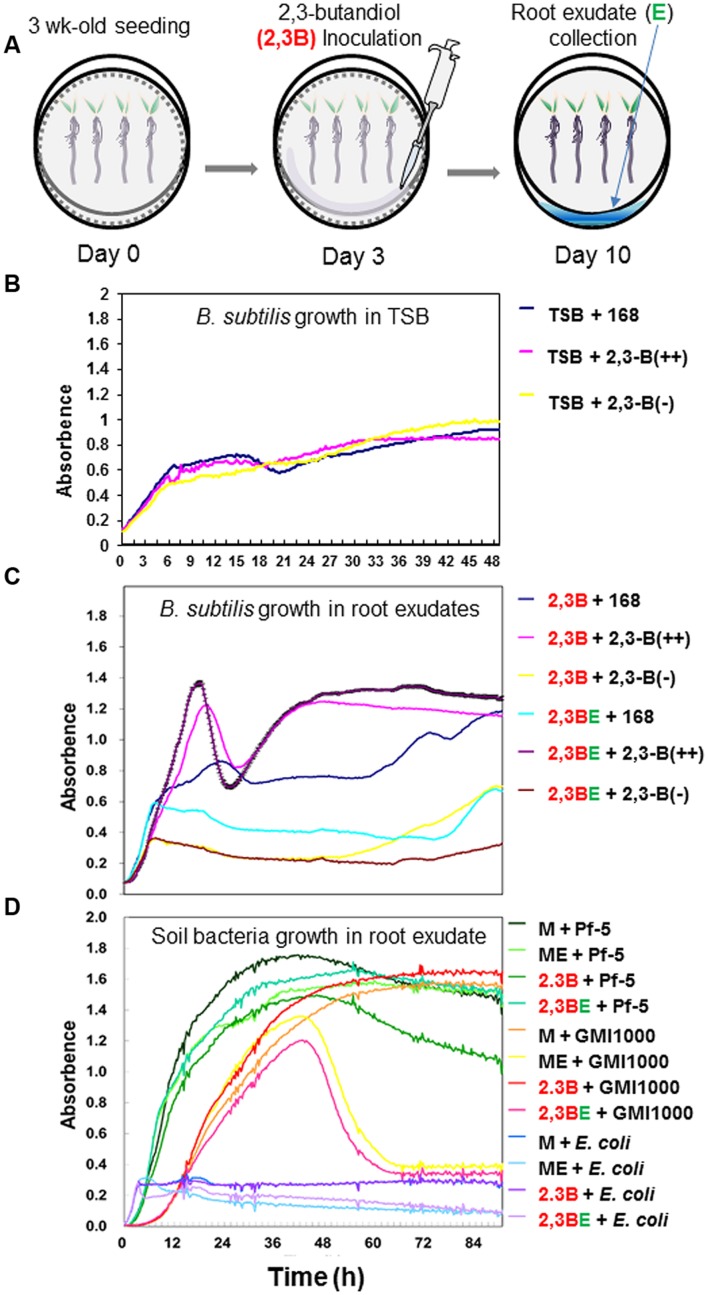FIGURE 3.
Growth kinetics of B. subtilis wild-type and mutant strains after exposure to root exudates elicited by 2,3-butanediol. Initial cell culture concentrations were OD600 = 0.02 and data are shown as log-normal plots. Tryptic soy broth supplemented with root exudate at a 1:1 ratio was applied to pepper roots. Aliquots (150 μl) from each culture were transferred to 100 wells of a Bioscreen plate. Plates were incubated in a Bioscreen C (Fluoroskan; Labsystems, Helsinki, Finland) with shaking at 30°C for ~4 days. The OD600 of each well was measured every 15 min. 2.3B = 2,3-butanediol; 23BE = root exudate collected from 2,3-butanediol-treated root system; 168 = B. subtilis 168; BSIP 1174 = B. subtilis BSIP 1174 (non-producer); BSIP 1171 = B. subtilis BSIP 1174 (overproducer); Pf-5 = Pseudomonas protegens Pf-5; GMI1000 = Ralstonia solanacearum GMI1000; M = MS broth; ME = MS broth amended with root exudate without treatment. (A) Schematic of protocol to extract root exudates after 2,3-butanediol application. (B) Growth kinetics of the three strains in control TSB medium. The figure indicate background expression of three strains 168, 2,3-B(++), and 2,3-B(-). (C) Growth of bacterial strains 168, 2,3-B(++), and 2,3-B(-) after treatment with 2,3-butanedol alone (referred to as 2,3B) or 2,3-butanediol-elicited root exudate (referred to as 2,3BE). (D) Growth kinetics of P. protegens Pf-5, Ralstonia solanacearum GMI1000, and E. coli. P. protegens Pf-5 is a non-pathogenic saprophyte that inhabits soil, water, and plant surface environments. Growth of P. protegens Pf-5 was not inhibited by 2,3-butanediol-elicited exudate. Growth of GMI1000, a soil-borne bacterial wilt pathogen, was inhibited by root exudates. E. coli was included as a bacterial control. Data shown are mean ± SEM of triplicate experiments.

